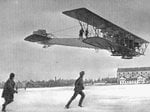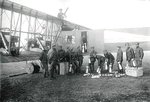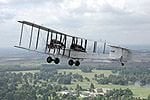djd
Recruit
This is my first post so I hope this is the right place for this topic. A while back I saw the movie "Flyboys" about WW1 fighter pilots. During the bombing raids I did not notice any bombs being carried under the wings of the planes. Was this just a movie error or did planes of this vintage have bomb bays as did later aircraft in WWII? It had been my opinion that all bombs during WW1 were either dropped from the cockpit or were attached under the wings.

















